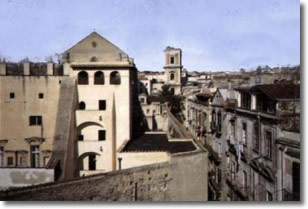
- The Filangieri Museum
The museum is in the prestigious Palazzo Como, built in the 15th century during the reign of Alfonso of Aragon. It was at risk of demolition in 1880 when Via Duomo needed to be widened.
After the municipal authorities had rebuilt the palazzo, retaining the façade by laying it back to the edge of the new road, the Prince of Satriano, Gaetano Filangieri reconstructed the interior and opened his private collection to the public for educational purposes. He begun, with other important esponents of the Neapolitan culture, the protection of cultural heritage of the city.
The Filangieri Museum was inaugurated in 1888 as "Puclic Museum".
On the ground floor there is a rich set of weapons as well as sculptures (among them "Victa" of Francesco Jerace) and a bust by Antonio Canova. In the showcases are gentlemen's costumes of the 19th century and a large collection of weapons from Eastern countries.
In the superb Sala Agata on the second floor there are statues of shepherds by Francesco Celebrano and Giuseppe Sanmartino. The walls are hung with paintings by Neapolitan and European artists: Jusepe de Ribera, Luca Giordano, Andrea Vaccaro, Mattia Preti and Bernardo Luini. On the right at the end of the hall, a wooden staircase leads to a hanging passageway. The exhibition cases contain precious porcelain ware and beautifully-woven textiles.
The passageway leads to the library, which houses 15,000 volumes, 7,000 coins, the precious Bovi and Mastroianni collections, the D'Ambra collection of manuscripts concerning music and the Neapolitan theatre from the 17th to the 19th century. There are also 150 parchments in the Filangieri family's archive concerning the history of Naples.